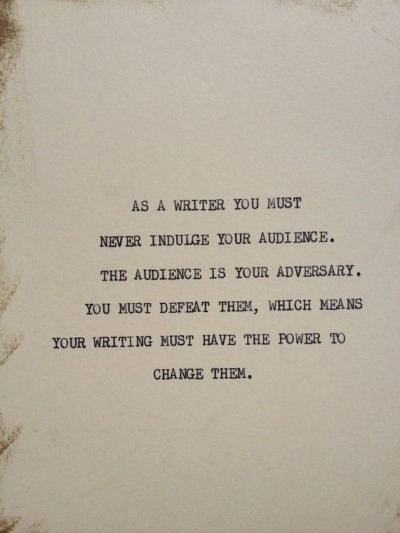Writing Is For Everyone
I have always lived under the philosophy that anyone can write.
Since I was young, while writing stories with largely copied plots from my favorite movies, I have been in love writing. It is an art. It was always my art, and I soon came to the realization that art is wholly subjective. Writing is wholly subjective.
Meaning, there is not one way to write.
 |
| Image source |
I find there is a certain elitist ideology that permeates through writing, and when discovering about writers like Dryden and Addison, this idea of elitism remains true. However, it is not secluded to this one specific era in the 18thcentury or these two men. The idea of elitism in writing has been passed down through generations. It remains true in modern day academia and sometimes narrative writing. It is the idea that there is only one correct way to write. It is the idea that other forms or methods of writing are simply false because a group of elitists deem them so.
Here’s the thing: writing comes in seemingly infinite forms. One way or another, anyone can sit down and write a masterpiece if it is something they are passionate about. A single person’s writing can even change based on the subject they are writing about. Writing becomes infinitely better once there is passion involved.
That is how writing becomes art. Through passion.
By saying writing must come in one form, Dryden and Addison are taking the art out of something inherently artful.
Let me say it one more time: Writing is art.
It is meant to be creative and spontaneous. It is meant to be anything and everything, and it is not meant to be chained down to one singular aspect.
The Amorous Lady understood that. In fact, she treasured that aspect of writing. She knew writing was not meant to be done one way, so she took writing and created something that was entirely hers.
She placed art back in writing by dedicating an entire piece to calling out those that claim writing must occur one way.
 |
| Image source |
There is beauty in her writing that is seldom seen during this time. It is vulnerable and creative and passionate. That is a key distinction between her writing and that of Dryden or Addison. You can feel her passion through every single word. It is tangible, and it is a direct contrast to how Dryden and Addison say writing must look.
I find that those men’s work often reads like a textbook. It is dry and informational, and while there is nothing innately wrong with it, that does not mean everyone should write that way.
That is what the Amorous Lady is sharing with each word she writes.
She is imploring others to find their own words. She is imploring others to find meaning in the words they write, and she wants people to find their own meaning–not a meaning that was predetermined by other writers (mostly, men).
To me, there is beauty in honoring your own words. It is going against the status quo, and that is inherently brave. In a sense, that is what the Amorous Lady was doing. She took advice from men, advice that most people thought she must follow, and said, “Eh, not for me.” Then she took back writing for herself and created art.
Just like that, she proved that writing truly was for everyone.

Hey Gabrielle,
ReplyDeleteAgain, great post. I feel awkward correcting any mistakes after reading your piece that art should not be liable to criticism because it is produced out of passion. However, I do think there are a few places there can be a little improvement. In the first paragraph "in love (with) writing" might help the sentence read better. Also, under each image if you could replace Image source with a caption. If you click on the photo while in the creation process, the is an A with a line under it to toggle a caption. You can replace the caption in that spot.